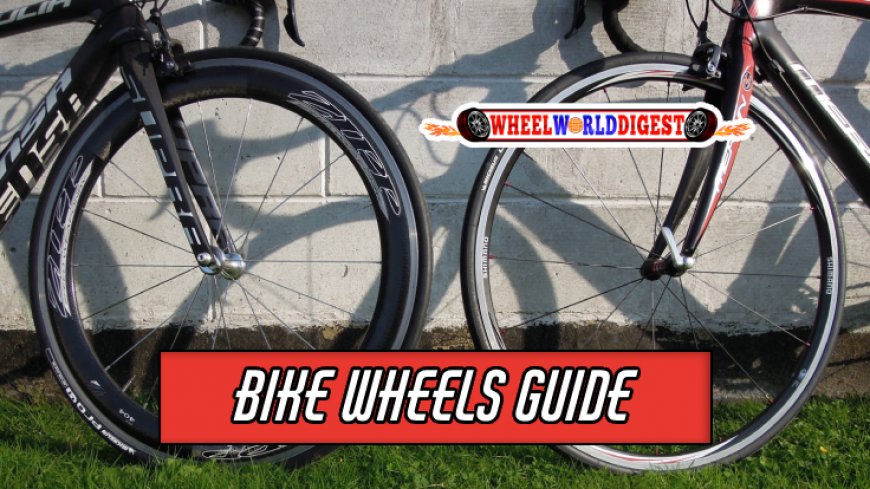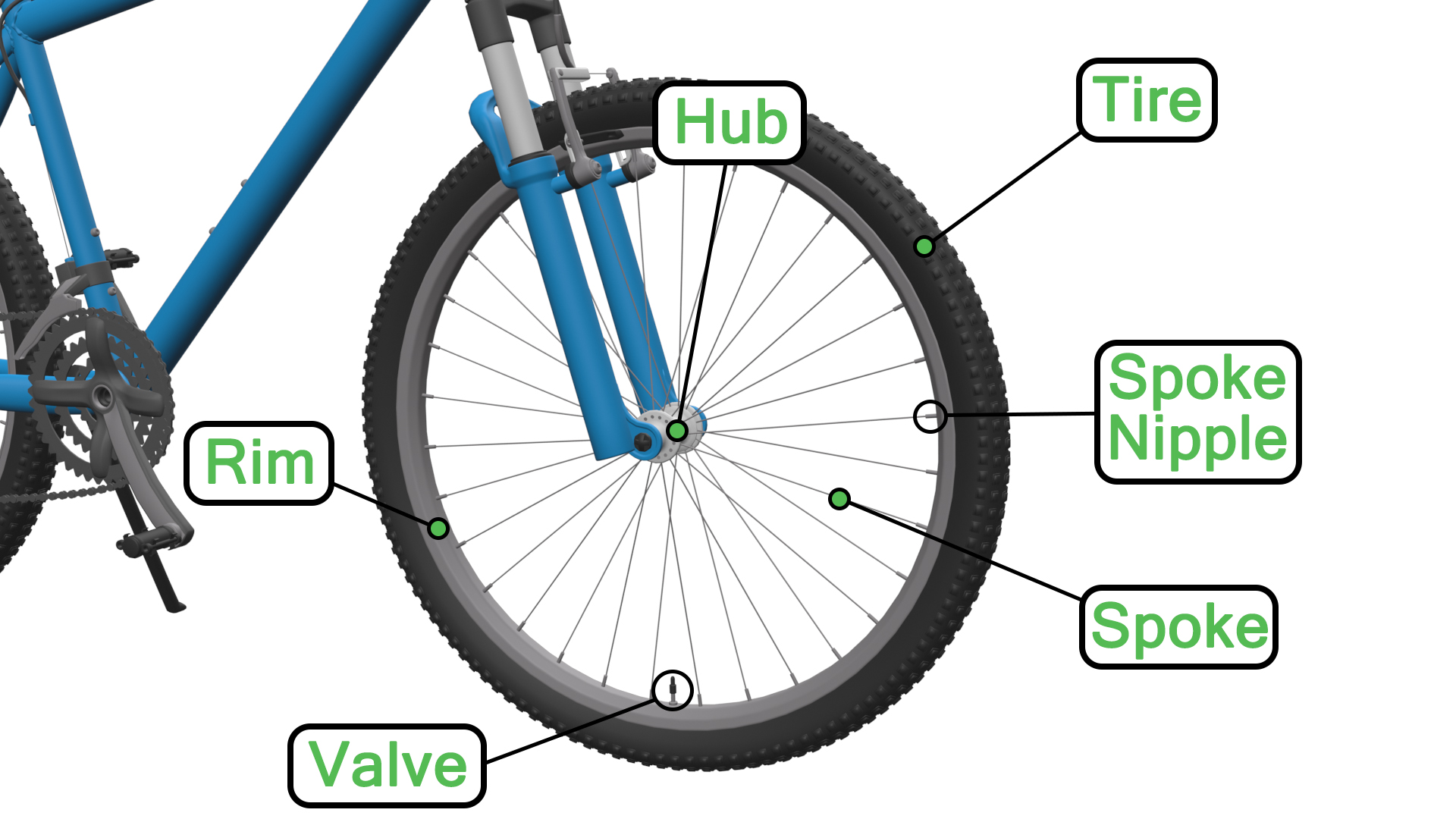Mastering Bike Wheels - Your Ultimate Guide
Dive into the world of bike wheels. Uncover the intricacies of design, materials, and performance for a reliable ride every time!

Ready to master the world of bike wheels? Understanding the nuances of this key component can drastically improve your cycling. This guide takes a deep dive into the design, materials, and performance aspects of bike wheels to ensure you get the most reliable and satisfying ride every time.
The A to Z of Bike Wheels
In this ultimate guide, we’ll cover everything you need to know about bike wheels. From the parts that make up a wheel to the different materials used in manufacturing, and even a little bit about high-performance wheels meant for the pros. This is your comprehensive roadmap to understanding and mastering bike wheels.
Table of Contents
- Understanding the Constitution of a Bike Wheel
- Materials in Bike Wheels
- Types of Bike Wheels
- Performance Factors of Bike Wheels
- Bike Wheel Maintenance
- Common Issues and Fixes
- Upgrading Your Bike Wheels
Understanding the Constitution of a Bike Wheel

The components of a bike wheel are key to its performance, durability, and ride quality. Understanding these parts will help you make informed choices about upgrades, maintenance, and problem-solving. Here are the basic parts of a bike wheel:
- Hub: The central part of the wheel that connects to the bike's frame through the axle.
- Spokes: These connect the hub to the wheel rim, creating tension and allowing for the transfer of rider power from the hub to the tire.
- Rim: Outer part of the wheel. It holds the tire and provides a surface for the brake pads to grip onto.
- Nipples: These small pieces are used to adjust the tension in the spokes.
Materials in Bike Wheels
The different materials used for bike wheels have a massive impact on riding performance. Major factors to consider include weight, durability, and cost. Let's talk about the most common materials:
- Aluminum: Known for its excellent strength-to-weight ratio, making it a favorite for everyday biking and even racing. Plus, aluminum wheels are usually lighter on the pocket.
- Carbon: Carbon fiber wheels are lightweight and stiff, offering great performance. They're often chosen by professional racers but can cost a pretty penny!
- Steel: These are the toughest and longest-lasting, but they're also the heaviest. Ideal if durability is your top priority.
Types of Bike Wheels

Depending on your riding style, terrain, and bike, the type of wheel you need may vary. Here's a brief rundown of the main types:
Road Bike Wheels
These are usually lighter, with narrower rims to fit thin, high-pressure tires. They're designed for speed and efficiency on smooth roads.
Mountain Bike Wheels
Designed for rough and rugged trails, these wheels are wider and more robust. They accommodate thicker, lower pressure tires that provide better traction on uneven surfaces.
Hybrid Bike Wheels
A middle ground between road and mountain bike wheels. Ideal for casual riders, daily commuting, and light trail riding.
Performance Factors of Bike Wheels
Several factors contribute to the overall performance of a bike wheel. Knowing these factors can help you choose the right wheel for your needs.
- Size: The size of the wheel influences the bike's speed, maneuverability, and overall stability.
- Aerodynamics: Wheel design, particularly the depth of the rim, can significantly affect wind resistance and consequently, the bike’s speed.
- Weight: Lighter wheels allow for quicker acceleration, while heavier ones may offer more control and durability.
Understanding the interaction of these performance factors is instrumental in selecting a wheel that fits your riding style and terrain.
Bike Wheel Maintenance

Like any component of your bike, wheels also need regular attention to stay in top shape. Following a few maintenance best practices can help you get the best possible performance and extend your wheels' lifespan.
Regular Cleaning
Dirt and grime can get stuck in the wheel components and accelerate wear and tear. Regular cleaning ensures that all elements are free of debris and function smoothly. Use mild soap, water, and scrub the wheels gently, being careful not to damage the spokes.
Spoke Check and Adjustment
Spokes maintain the structural integrity of the wheel. Periodically checking them for any looseness and readjusting them is a crucial element of bike wheel maintenance. Ideally, all spokes should have the same tension for evenly distributed weight.
Common Issues and Fixes
Even with the best maintenance regimen, bike wheels can experience common problems. Luckily, most of these issues are fixable with some basic tools and a bit of elbow grease.
- Flat Tyres: There's little as common or annoying as flat tyres. Always carry a spare, along with a tyre lever and a pump, just in case. Prevent flats by checking tyre pressure regularly and avoiding sharp debris on your rides.
- Bent Rims: Bent rims can happen from hard impacts and usually affect the wheel's rotation. Minor bends can often be corrected with a bit of careful bending back into place; worse cases might require a new rim.
- Loose Spokes: Loose or broken spokes can considerably weaken your wheel. Tighten them with a spoke wrench, or replace them if they're broken. Regular checkups can help prevent this issue from happening.
Upgrading Your Bike Wheels

Upgrading your wheels can be a game-changer for your cycling experience. Whether it's for better ride quality, higher speed, or simply a desire to individualize your bike, there are a few considerations to bear in mind.
- Purpose: Are you looking for speed, durability, off-road capabilities, or perhaps a balance of all three? The purpose will guide your choice of wheel type and material.
- Budget: "The best" often comes with a hefty price tag. Determine your budget in advance and remember - there's a good range of options at varying price points.
- Compatibility: Not all wheels fit all bikes. Always confirm compatibility with your bike's specifications before embarking on an upgrade.
Conclusion
In the vast world of biking, understanding bike wheels can radically transform your ride. Getting to know the different aspects - design, materials, types, performance factors - helps you make better decisions when it's time for maintenance, troubleshooting, or even an upgrade. Remember - the best wheel for you is one that fits your style, terrain, and purpose, ensuring a rewarding ride every time.
What's Your Reaction?









































































